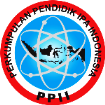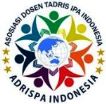Implementation of Visual, Auditory, and Kinesthetic (VAK) Differentiated Learning to Improve Scientific Communication Skill in Science Subjects
Abstract
This study aims to improve students' scientific communication skills through the implementation of differentiated VAK (Visual, Auditory, and Kinesthetic) learning in the "Motion and Force" topic for Grade VII of junior high school, in response to the demands of the Independent Curriculum, which emphasizes student-centered learning by accommodating diverse learning needs. This quantitative research employed a quasi-experimental approach with a Nonequivalent Pretest-Posttest Control Group Design. The study involved 100 students from SMPN 1 Tembilahan, divided into experimental and control groups. Data analysis was conducted both descriptively and inferentially to assess the impact of VAK-differentiated learning compared to conventional scientific learning methods on the enhancement of scientific communication skills. Scientific communication abilities were evaluated based on six indicators: information retrieval, scientific reading, scientific writing, listening and observation, information representation, and knowledge presentation. Pretests and posttests were administered to both groups. The results showed that the average posttest scores of the experimental group were significantly higher than those of the control group. Furthermore, the MANOVA test confirmed a significant difference in the improvement of scientific communication skills between the groups, indicating that VAK-differentiated learning effectively supports the development of scientific communication competencies among students.
Keywords: scientific communication, VAK differentiationFull Text:
PDFReferences
Arikunto, S. (2013). Dasar-Dasar Evaluasi Pendidikan. Yogyakarta: Bumi Aksara
Aranda, R. R., & Zamora, J. L. (2017). Using Differentiated Instruction in Improving the Academic Performance of Students in Filipino Language. 35–47.
Bengtsson, M. (2016). How to plan and perform a qualitative study using content analysis. NursingPlus Open, 2, 8–14. https://doi.org/10.1016/j.npls.2016.01.001
Craig A, M. (2002). Advanced and Multivariate Statistical Methods. Pyrczak Publishing.
Creswell, J. W. (2014). Research Design: Qualitative, Quantitative and Mixed Methods Approaches (4th ed.). https://www.ptonline.com/articles/how-to-get-better-mfi-results
Fitra, D. K. (2022). Pembelajaran Berdiferensiasi dalam Perspektif Progresivisme pada Mata Pelajaran IPA. Jurnal Filsafat Indonesia, 5(3), 250–258.
Henz, D., & Schöllhorn, W. I. (2016). Differential training facilitates early consolidation in motor learning. Frontiers in behavioral neuroscience, 10, 199.
Huebner, T. A. (2010). Differentiated instruction. Educational Leadership, 67(5), 79–81. https://doi.org/10.4324/9781315639987-26
Naibaho, D. P. (2023). Strategi Pembelajaran Berdiferensiasi Mampu Meningkatkan Pemahaman Belajar Peserta Didik. Journal of Creative Student Research, 1(2), 81-91.
Nurlaelah, I., Widodo, A., Redjeki, S., & Rahman, T. (2020). Analisis Kemampuan Komunikasi Ilmiah Peserta Didik Pada Kegiatan Kelompok Ilmiah Remaja Berbasis Riset Terintegrasi Keterampilan Proses Sains. Quagga: Jurnal Pendidikan Dan Biologi, 12(2), 194. https://doi.org/10.25134/quagga.v12i2.2899
Pratiwi, I. (2019). PISA Effect On Curriculum In Indonesia. Jurnal Pendidikan Dan Kebudayaan, 4(1), 51.
Rukminingsih, Adnan, G., & Latief, M. A. (2020). Metode Penelitian Pendidikan. Penelitian Kuantitatif, Penelitian Kualitatif, Penelitian Tindakan Kelas. In Journal of Chemical Information and Modeling (Vol. 53, Issue 9).
Santos, S., Coutinho, D., Gonçalves, B., Schöllhorn, W., Sampaio, J., & Leite, N. (2018). Differential Learning as a Key Training Approach to Improve Creative and Tactical Behavior in Soccer. Research Quarterly for Exercise and Sport, 89(1), 11–24. https://doi.org/10.1080/02701367.2017.1412063
Scherz, Z., Spektor-Levy, O., & Eylon, B. S. (2005). “Scientific communication”: An instructional program for high-order learning skills and its impact on students’ performance. Research and the Quality of Science Education, 231–243. https://doi.org/10.1007/1-4020-3673-6_19
Schleicher, A. (2009). Securing Quality and Equity in Education: Lessons from PISA. PROSPECTS, 39(3), 251–263. https://doi.org/10.1007/s11125-009-9126-x
Siswanto, S., Subali, B., & Ellianawati, E. (2023). Integration of Argumentation Activities in Virtual-Inquiry to Improve Argumentation Skills of Prospective Science Teacher in Basic Physics Courses. Journal of Natural Science and Integration, 6(1), 28-38.
Sjøberg, S. (2018). The power and paradoxes of PISA: Should Inquiry-Based Science Education be sacrificed to climb on the rankings? Nordic Studies in Science Education, 14(2), 186–202. https://doi.org/10.5617/nordina.6185
Spektor-Levy, O., Eylon, B. S., & Scherz, Z. (2008). Teaching communication skills in science: Tracing teacher change. Teaching and Teacher Education, 24(2), 462–477. https://doi.org/10.1016/j.tate.2006.10.009
Spektor-Levy, O., Eylon, B. S., & Scherz, Z. (2009). Teaching scientific communication skills in science studies: Does it make a difference? International Journal of Science and Mathematics Education, 7(5), 875–903. https://doi.org/10.1007/s10763-009-9150-6
Sudirtha, I. G., Widiartini, N. K., & Anggendari, M. D. (2021). Development of 21st century skill learning designs through the application of the concept of independent learning in the vocational field. Journal of Physics: Conference Series, 1810(1). https://doi.org/10.1088/1742-6596/1810/1/012062
Tomlinson, C. A. (2000). Differentiation of Instruction in the Elementary Grades. ERIC Digests, 1–7.
Tomlinson, C. A. (2001). How to Differentiate Instruction in Mixed-ability Classrooms. In Association for Supervision and Curriculum Development.
Variacion, D. A., Salic-Hairulla, M., & Bagaloyos, J. (2021). Development of differentiated activities in teaching science: Educators’ evaluation and self-reflection on differentiation and flexible learning. Journal of Physics: Conference Series, 1835(1). https://doi.org/10.1088/1742-6596/1835/1/012091
White, P., & Gorard, S. (2017). Against inferential statistics: How and why current statistics teaching gets it wrong. Statistics Education Research Journal, 16(1), 55–65. https://doi.org/10.52041/serj.v16i1.215
DOI: http://dx.doi.org/10.24014/jnsi.v8i1.23988
Refbacks
- There are currently no refbacks.

Journal of Natural Science and Integration
E-ISSN: 2620-5092 P-ISSN: 2620-4967
Published By:
Department of Science Education, Faculty of Education and Teacher Training,
State Islamic University of Sultan Syarif Kasim Riau, Indonesia
Mailing Address:
Jl. H.R Soebrantas Km. 15 No. 155
Kelurahan Simpang Baru
Kecamatan Tuah Madani, Pekanbaru, Riau, Indonesia
Email: jnsi.tadrisipa@uin-suska.ac.id
Indexed By:
Journal of Natural Science and Integration is licensed under a Creative Commons Attribution 4.0 International License.


_-_Copyy2.png)






.jpg)
.png)
.jpg)
.jpg)




